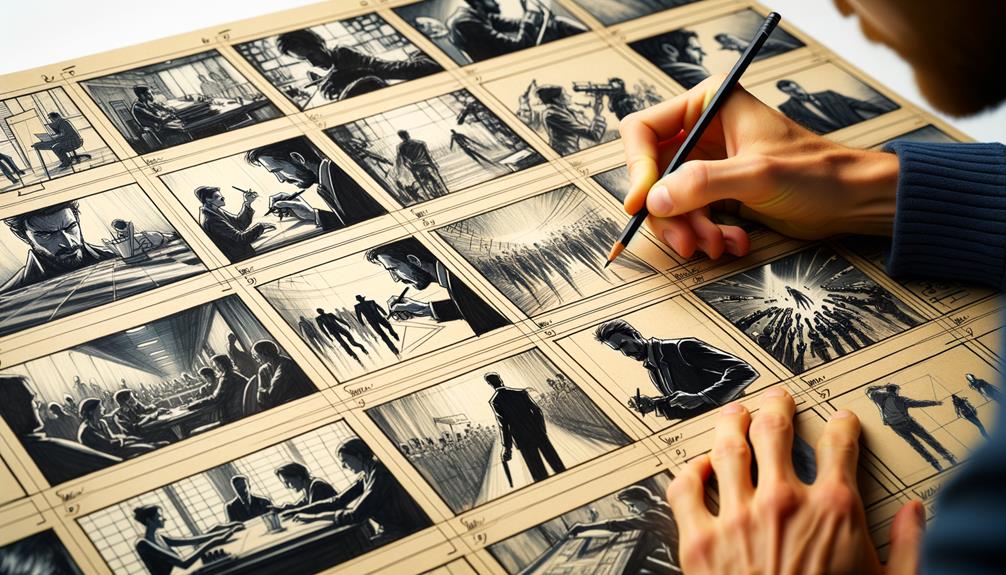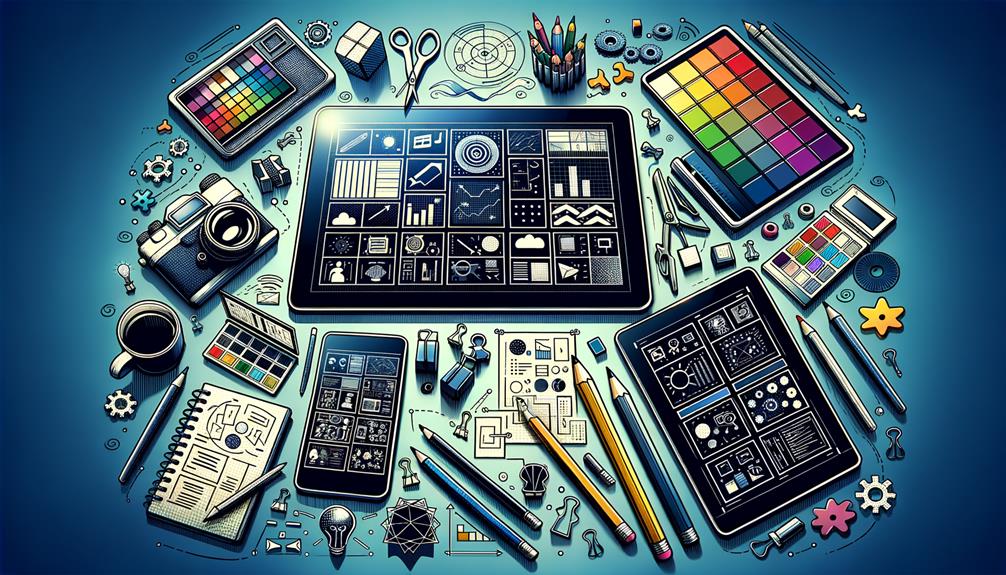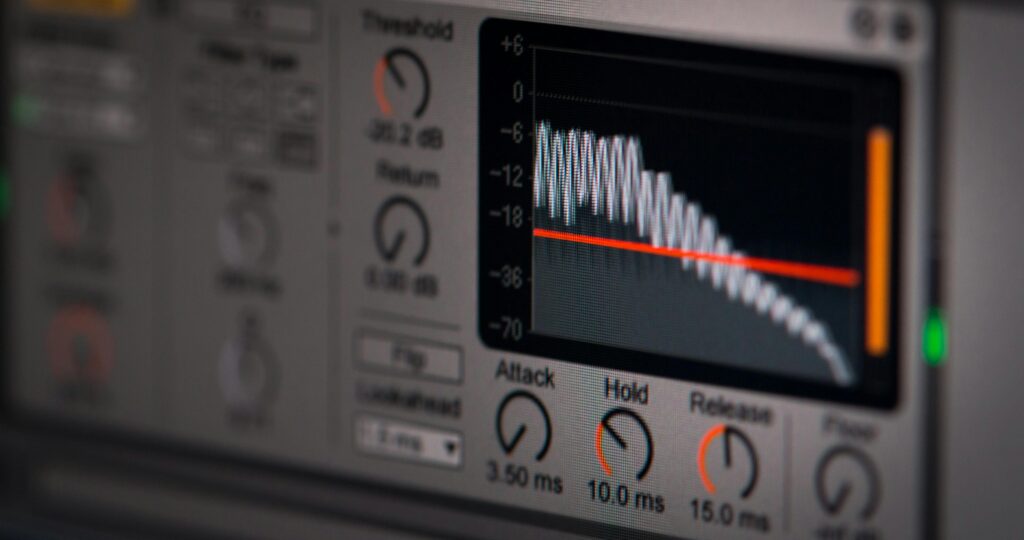A recent survey revealed that over 80% of successful filmmakers view storyboarding as a critical part of their creative process. As a writer who’s navigated the complex waters of storytelling for years, I’ve come to see this tool as more than just a series of sketches; it’s a bridge between initial concept and final product.
Storyboarding enables me to visualize scenes, anticipate challenges, and communicate ideas effectively. However, the true potential of this technique lies in its ability to adapt and evolve.
Stick around, and I’ll share how mastering the nuances of storyboarding can transform your projects, regardless of the medium.
Key Takeaways
- Storyboarding is a pre-visualization technique for mapping out film scenes through detailed sketches.
- It combines creative vision with practical shot planning to enhance narrative coherence.
- Various types of storyboards, including traditional, digital, and animatic, cater to different storytelling needs.
- Popular tools like StoryboardThat and StudioBinder facilitate storyboard creation and team collaboration.
Storyboard Fundamentals

At its core, storyboarding is like sketching the blueprint of a movie, mapping out each shot with precision and creativity to visualize the narrative flow. It’s a visual journey, where storyboards transform abstract ideas into tangible frames, laying the foundation for what’s to come.
Each panel captures a moment, detailing camera angles and movements, bringing clarity to how a scene unfolds. It’s about plotting the journey, shot by shot, ensuring every transition is smooth, and every scene contributes to a cohesive visual narrative.
This method isn’t just about planning; it’s about envisioning the end product, making sure that when the camera rolls, the vision is clear. Storyboarding is the first brushstroke on the canvas of filmmaking, mapping out the masterpiece shot by shot.
Essential Storyboarding Steps
Diving into the essential steps of storyboarding, we start by sketching blank slides to frame our narrative’s journey visually. This foundational act paves the way to script dialogue, describe vivid scenes, and add dynamic visual representations, ensuring our story’s essence is captured.
As I create a storyboard, I’m mindful of the balance between artistic freedom and the coherence of the visual narrative. Utilizing hand-drawn techniques not only infuses my work with a personal touch but also allows for quick iterations. I can effortlessly make changes, adapting the storyboard to the evolving vision of the project.
This process, though time-consuming, is a testament to the craft’s authenticity, enabling me to weave intricate stories through a cost-effective and highly customizable approach.
Benefits of Storyboarding

After exploring the steps to craft a storyboard, let’s consider how this process reaps substantial benefits, particularly in saving time and money by preempting costly reshoots.
- Saves Time & Money: By visualizing scenes beforehand, we dodge the bullet of expensive do-overs.
- Enhances Communication: It bridges the gap between vision and reality, serving as a clear visual reference for all team members.
- Improves Efficiency: Like a well-oiled machine, storyboarding streamlines the creation process, guiding us towards a cohesive visual narrative.
- Facilitates Planning: It’s the planner I never knew I needed, allowing for seamless shot organization and visual experimentation.
- Acts as a Blueprint: Ensuring everyone from the director to the crew is on the same wavelength, it’s the foundational blueprint for our visual masterpiece.
Types of Storyboards
How do we best capture our vision for a project, ensuring every frame aligns with our creative intent? The answer lies in the art of storyboarding.
Traditional storyboards, with their hand-drawn sketches, bring a raw, authentic feel to the planning stage, perfect for those who appreciate the tactile aspect of creativity. On the flip side, digital storyboards offer unparalleled flexibility, allowing for swift edits and easy sharing among collaborators.
When I’m aiming for a dynamic presentation, animatic storyboards are my go-to, blending motion and sound for a vivid preview of the final sequence. Sometimes, a hybrid approach is what’s needed, merging traditional and digital techniques to tailor the storyboard to the project’s specific demands.
Choosing the right type isn’t just about preference; it’s about what best serves the story I’m striving to tell.
Popular Storyboarding Tools

Exploring the landscape of storyboarding tools, I’ve discovered a range of options that breathe life into our visual narratives, each with its own unique flair and functionalities.
- StoryboardThat: Offers a free storyboard tier and a premium plan, packed with an extensive image library to create a visual feast.
- StudioBinder: Stands out for customization and note features, allowing for detailed storyboard examples and collaboration.
- MakeStoryboard: Known for collaboration features and animated actors, it elevates visual storytelling.
- ShotPro: Provides detailed storyboarding capabilities at a reasonable price, a hit among professionals.
- Storyboarder: Offers easy drawing tools and image imports, streamlining the creation process.
These storyboarding software options transform raw ideas into compelling visual stories, ensuring every frame contributes to the narrative journey.
Implementing Storyboards in Business
In today’s fast-paced business environment, storyboarding emerges as a crucial tool, visually mapping out projects to streamline production and enhance stakeholder engagement. It’s not just an artistic endeavor; it’s a strategic business move. By envisioning the video production from start to finish, we gain invaluable stakeholder buy-in and save precious time.
Here’s how it transforms project management:
| Stage | Benefit | Application |
|---|---|---|
| Pre-production | Streamlines planning | Video Production |
| Execution | Aligns teams | User Experience |
| Post-production | Ensures quality | Visual Marketing |
Implementing storyboarding in business isn’t just about drawing; it’s about visual-thinking, setting clear goals, and keeping everyone on the same page. It’s a game-changer in project management, transforming abstract ideas into actionable plans.
Frequently Asked Questions
What Is the Meaning of Storyboarding?
I understand storyboarding as sketching out my ideas frame by frame to see how my story unfolds. It’s like mapping a journey before taking the first step, ensuring my vision comes to life seamlessly.
What Is a Storyboard and Why Is It Useful?
A storyboard is my compass in the sea of creativity, guiding me through the tumultuous waters of production. It’s a visual script, mapping every scene’s heartbeat, ensuring our vision comes alive, seamlessly and vividly.
What Are the 7 Steps in Storyboarding?
I sketch my ideas, then jot down the script. Next, I describe each scene vividly, decide on shots, angles, and character movements. Finally, I weave in dialogue, bringing my visual story to life step-by-step.
Conclusion
In the dim glow of my workspace, my hand moves, sketching the future frame by frame. Each drawing, a stepping stone across the chasm of creation, guides my vision from the abstract to the palpable.
As I lay down the last storyboard panel, a world once locked in my mind’s eye sprawls before me, tangible, ready. The journey from concept to reality is fraught, but with my storyboard as a compass, I navigate the creative labyrinth, poised to unveil the unseen.



